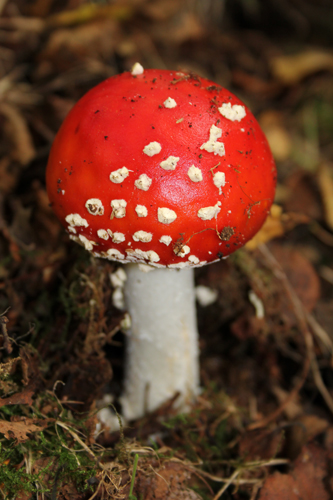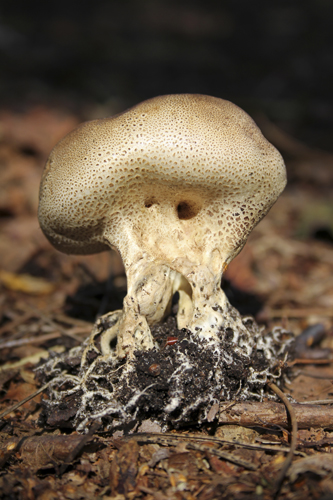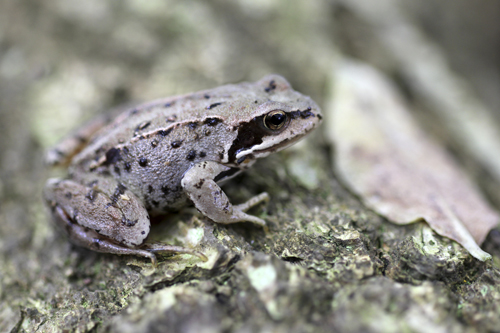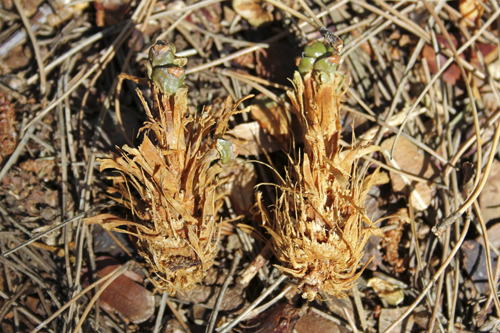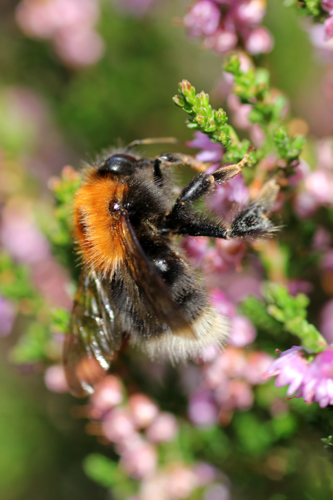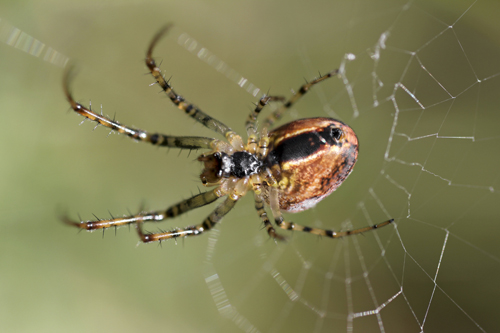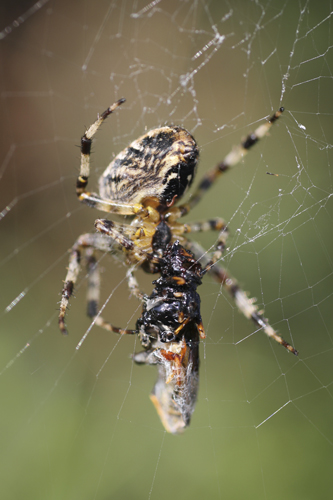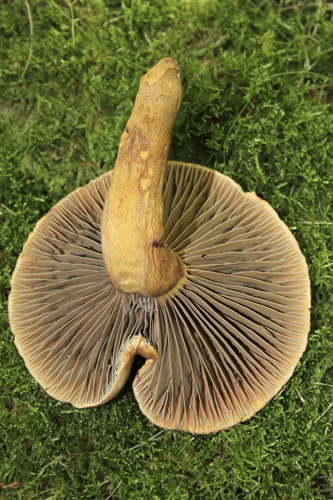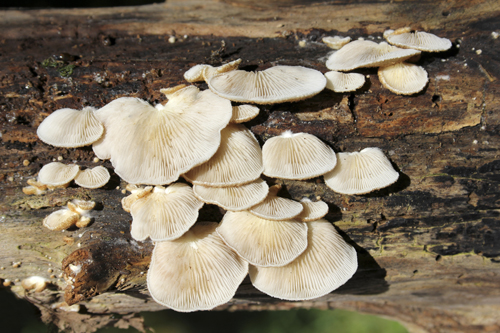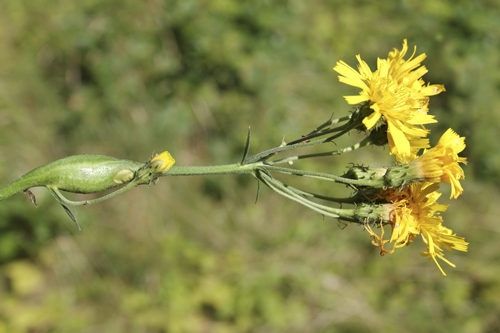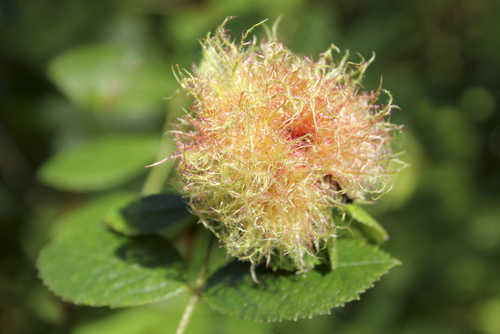A great turnout with twenty MNA members including some new faces joining our Fungal Foray around Freshfield Dune Heath and the Formby Pinewoods. Member Tony Carter provided invaluable expertise with fungi identification during the day. The weather was sunny and dry as we walked along toward the small wood adjacent to the dune heath not your ideal fungal foray conditions but various species were quickly found! Sycamore Tar Spot Rhytisma acerinum and Red Pustule Galls caused by the Mite Aceria macrorhynchus a.k.a. Eriophyes macrorhynchus were on Sycamore leaves Acer pseudoplatanus. As we bravely entered the tangled undergrowth of the wood we added Artists Bracket Ganoderma sp. Brown Rollrim Paxillus involutus, Ochre Brittlegill Russula ochroleuca, Fly Agaric Amanita muscaria, a rather slug-attacked Blusher Amanita rubescens, Orange Birch Bolete Leccinum versipelle and Brown Birch Bolete Leccinum scabrum. We eventually reached the more open area in the wood where we found Birch Milkcap Lactarius tabidus, Green Elfcup Chlorociboria aeruginascens, The Deceiver Laccaria laccata, Penny Bun Boletus edulis, Split Porecrust Schizopora paradoxa, Turkeytail Trametes versicolor and Scaly Earthball Scleroderma verrucosum.
Scaly Earthball
A cute young Common Frog Rana temporaria posed on a log before hopping into the leaf litter and there was evidence of Red Squirrels being around with nibbled pine cones.
Common Frog
Nibbled Pine Cones
We ate lunch as a Jay squawked above us then headed out into the sunshine of the heath. A Tree Bumblebee Bombus hypnorum caused excitement and clicking of cameras as it fed on the Ling Calluna vulgaris. It was first recorded in England in 2001 at a site in Hampshire and has rapidly spread North since.
Tree Bumblebee
Butterflies, Spiders and Dragonflies took centre stage for a while as Peacock Inachis io and Small Tortoiseshell Aglais urticae joined the numerous Hoverflies on the Ragwort Senecio jacobaea. Small Copper Lycaena phlaeas and Common Blue Polyommatus icarus led photographers a merry dance as they failed to settle. Spiders webs covered the Gorse bushes with a few Autumn Spiders Metellina segmentata and numerous Garden Spiders Araneus diadematus taking advantage of the Hoverfly food supply.
Autumn Spider
Garden Spider With Hoverfly Prey
Good numbers of Common Darter Sympetrum striolatum were joined by the svelte of waist Ruddy Darters Sympetrum sanguineum and a few Migrant Hawkers Aeshna mixta.
Ruddy Darter male
The Penduculate Oak Trees Quercus robur on the Dune Heath were taking their usual hammering with Oak Marble Galls caused by the Gall Wasp Andricus kollari, Oak Artichoke Gall caused by the Gall Wasp Andricus fecundator, Oak Common Spangle Gall caused by the Gall Wasp Neuroterus quercusbaccarum, a number of Leaf Miners caused by Micro-moths – a larvae was at home in one of the leaf-mines and Oak Powdery Mildew Erysiphe alphitoides. A few more Fungi species with Meadow Puffball Vascellum pratense and some micro-fungi – Common Grey Disco Mollisia cinerea and Orbillia xanthostigma and Cheilymenia granulata on cow dung. Swallows posed as they gathered on the fence wires gearing themselves up for their forthcoming migration this years youngsters looking drabber in appearance to the adults. Various vintage aeroplanes from taking off from Woodvale en route to the Southport Airshow also put on a good show for us as they performed aerial displays and looped the loop overhead the MNA delivers!
We crossed the railway track and golf course and into the pinewoods where a few Speckled Wood Pararge aegeria flitted around in the dappled sunlight. A number of Russulas were found including Bloody Brittlegill Russula sanguinea with its bright red cap and pink coloured stem and Crab Brittlegill Russula xerampelina which has a characteristic odour of shellfish. Three life stages of the False Deathcap Amanita citrina were seen together and Weeping Bolete Suillus granulatus, a Pine Spike-cap Chroogomphus rutilus and Bitter Oysterling Panellus stipticus were also noted.
Pine Spike-cap
Bitter Oysterling
A few spikes of Green-flowered Helleborine Epipactis phyllanthes had gone to seed and more Galls with Stem Galls on Narrow-leaved a.k.a. Leafy Hawkweed Hieracium umbellatum caused by the Gall Wasp Aulacidea hieracii and Bedeguar a.k.a. Robin’s Pincushion Gall on Dog Rose Rosa canina caused by the Gall Wasp Diplolepis rosae.
Stem Gall On Leafy Hawkweed
Robins Pincushion Gall
A Buzzard circled overhead and a Great-spotted Woodpecker called as we wandered back out of the pinewoods after a fungi and wildlife packed day.

